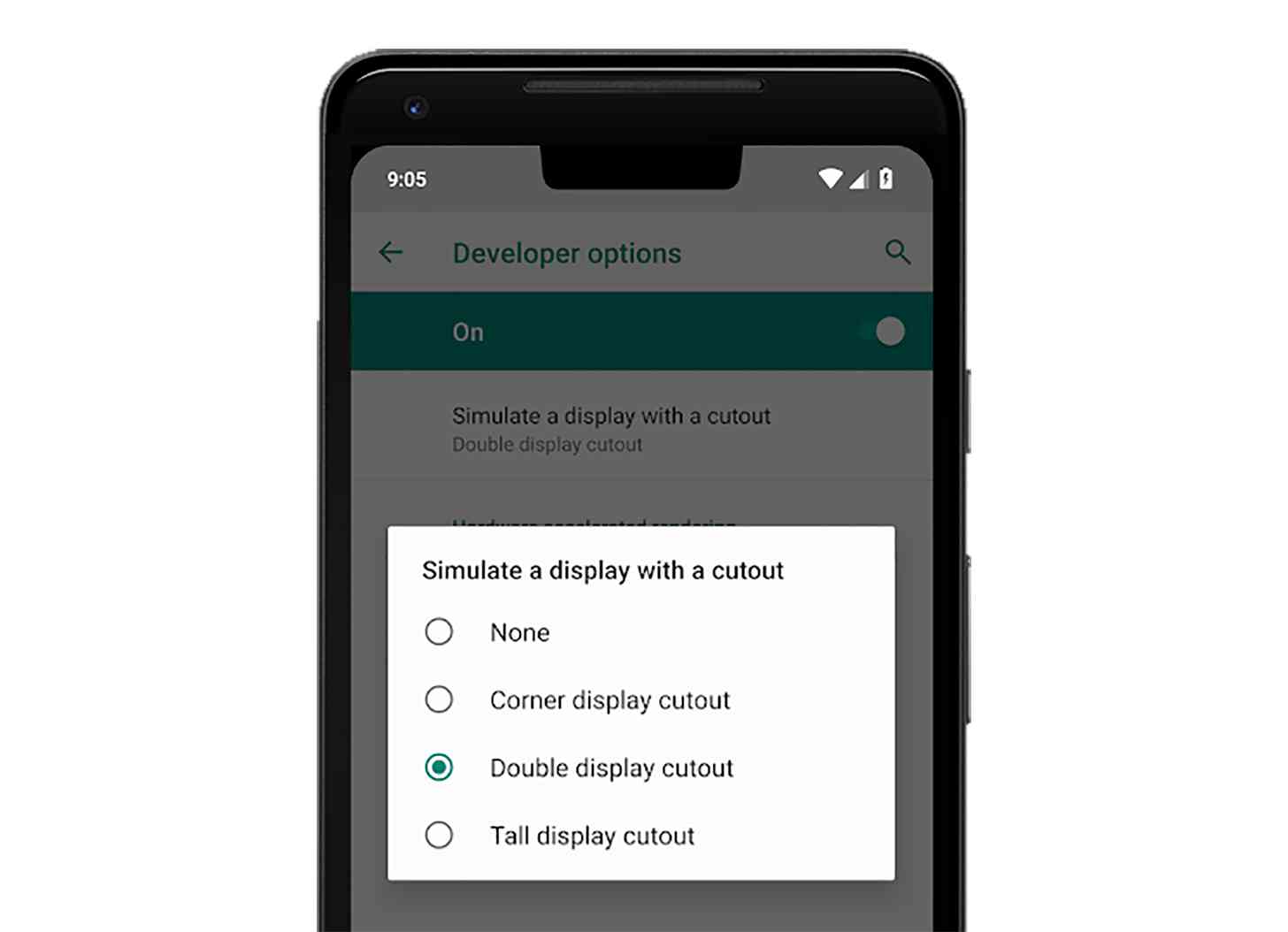
Android P is bringing with it official support for display notches, and today Google laid out how Android supports notches and some of the "rules" for using them.
Google explains that Android apps should work as intended on a device with a display notch. By default, with no special flags set, the Android status bar will be resized to be at least as tall as the device notch with the app content below it. In landscape or fullscreen, the app window will be letterboxed so that no content shows in the notch area, though developers can choose to render their app in the notch area to give an edge-to-edge experience.
When it comes to the requirements about display notches, Google says that devices may only have up to one cutout on each short edge of the device. That means that you won't see more than two display notches on a phone and that they'll only be on the top and bottom of a device when it's in portrait mode.
We haven't seen any devices come to market with more than one notch — there is that ZTE Iceberg, but that's only a concept for now — but Google has decided to set rules about notches and Android in order to guarantee an enjoyable experience for users. Of course, some device maker could try to spurn Google's rules and include three, four, or more notches on a phone, but it's possible that they wouldn't get access to Google apps like the Play Store if they do.
from PhoneDog.com - Latest videos, reviews, articles, news and posts https://ift.tt/2O0jhik
via IFTTT
No comments:
Post a Comment